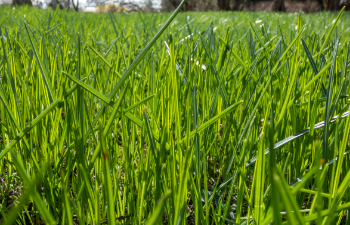
A lush, healthy lawn not only enhances the aesthetic appeal of your home but also contributes to the overall health of your outdoor environment. However, managing lawn care issues, particularly soggy patches that refuse to dry, can be a perplexing challenge for many homeowners. Pannone’s Lawn Pros & Landscaping brings years of expertise to the forefront, shedding light on the reasons behind persistently soggy areas in your lawn and providing critical considerations before taking the resodding route.
Unveiling the Mystery of Soggy Lawns
A soggy lawn, especially in specific areas, can be indicative of several underlying issues. Understanding these root causes is crucial for effective resolution:
- Poor Drainage: The most common culprit for soggy lawns is inadequate drainage. Clay-heavy soil, compacted ground, or a lack of proper slope for water runoff can trap moisture, preventing it from seeping away efficiently.
- Broken Irrigation Lines: Sometimes, the issue might lie beneath the surface with a damaged or leaking irrigation pipe. Such breaks lead to excessive water pooling in specific lawn areas.
- Overwatering: It’s possible to love your lawn a bit too much. Overwatering can saturate the soil, overwhelming its natural absorption and drainage capabilities.
- Thatch Buildup: Thatch, a layer of dead grass and roots, can impede water penetration into the soil, leading to surface waterlogging.
- Shaded Areas: Areas under dense tree canopies or structures might receive insufficient sunlight, slowing the evaporation of moisture and contributing to the soggy conditions.
Considerations Before Resodding
While resodding might seem like a straightforward solution to your soggy lawn woes, it’s essential to address the underlying issues first. Here are key factors to consider:
- Soil Assessment: Conduct a thorough analysis of your soil composition. Heavy clay soils may require amendment with sand or organic matter to improve drainage.
- Drainage Solutions: Consider implementing drainage solutions, such as French drains, grading, or installing a dry well, depending on the extent and source of the drainage issue.
- Irrigation Check: Inspect your irrigation system for leaks or malfunctions. Adjusting watering schedules based on the needs of your lawn can also prevent overwatering.
- Thatch Management: Regularly aerate your lawn to control thatch buildup and enhance soil-water interaction. This process allows oxygen, water, and nutrients to penetrate the soil more effectively.
- Environmental Adjustments: For shaded areas, pruning overhead branches to increase sunlight exposure or choosing shade-tolerant grass varieties can mitigate soggy conditions.
- Professional Consultation: Engaging with lawn care professionals, like Pannone’s Lawn Pros & Landscaping, can provide you with tailored advice and solutions. Experts can offer insights into the specific needs of your lawn, considering local climate and soil conditions.
Final Thoughts for Your Cumming Lawn
Before undertaking the task of resodding, it’s imperative to identify and rectify the root causes of soggy lawns. Ignoring these underlying issues can lead to recurrent problems, undermining your resodding efforts and investment. With a strategic approach, incorporating expert evaluations and implementing appropriate interventions, you can restore the health and beauty of your lawn, making soggy patches a thing of the past.
At Pannone’s Lawn Pros & Landscaping, we’re committed to helping you achieve the perfect outdoor space, offering comprehensive solutions for all your lawn care challenges. Whether it’s addressing drainage issues, soil health, or the right choice of grass, our team is here to guide you through every step of the way.
Posted on behalf of
1444 Buford Hwy
Cumming, GA 30041
Phone: (678) 294-0351
Email: pannoneslawnpros@gmail.com
Monday - Saturday 8:00 AM – 6:00 PM
